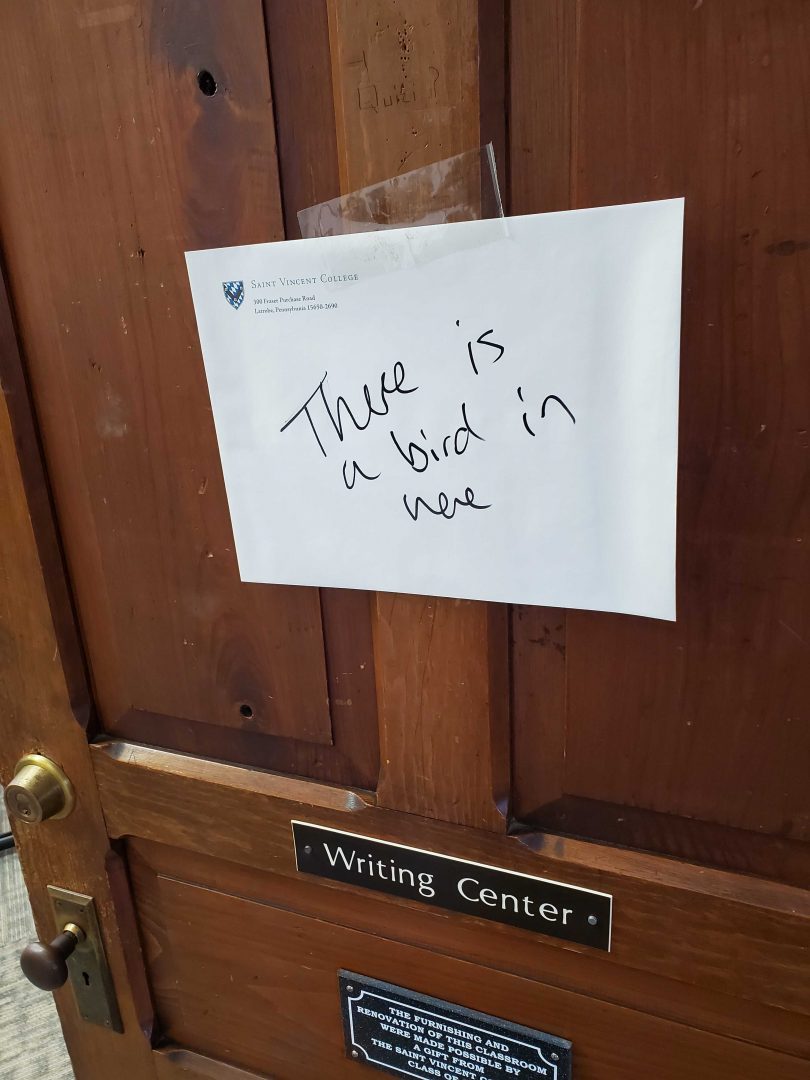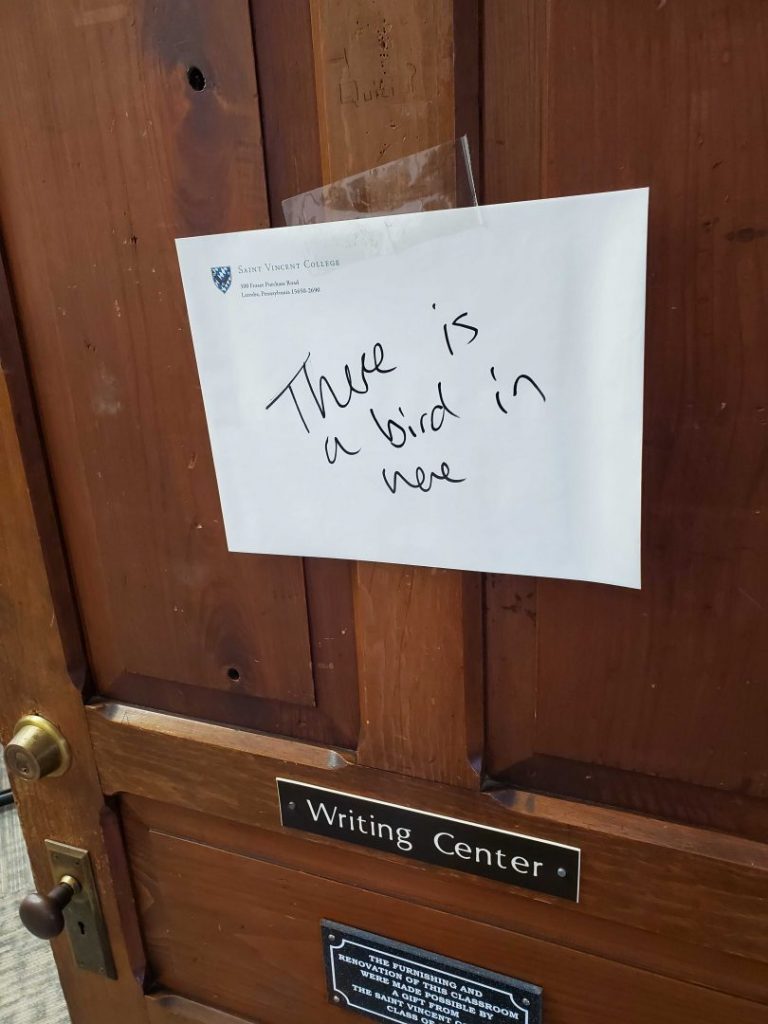What to do when a bird is trapped indoors
by Dr. Jim Kellam Ornithologist at Saint Vincent College
I got an email this morning from a professor in the English Department. He said there was a bird in a classroom. He evacuated the students and shut the door, and then didn’t know what to do, especially since the windows in that classroom don’t open. I looked at my watch and saw I had an hour before my Human Biology class. I have mixed feelings about spending my time trying to solve wildlife issues and not doing the work that I’m actually paid to do, but no one else on the Saint Vincent College campus is an ornithologist so if the bird was to be helped, I would have to do it. I gathered a butterfly net from our Biology Department supply closet and hurried down the sidewalk from the Dupré Science Pavilion to Placid Hall, fourth floor.
I opened the classroom door and let myself in. Perched on a bank of fluorescent lights hanging from the high ceiling was a European Starling. We met eyes and I think both of us thought to ourselves, “what do I do now?”
Birds are attracted to light. When birds are in a dark room, they will naturally fly toward any source of illumination. Perhaps they feel safer in bright spaces because it is easier to see predators and other dangers in the light. Indeed, diurnal birds have a much lower ratio of rod cells in their retinas than cone cells compared to humans. Rod cells provide us with gray-scale vision in low-light conditions. Cone cells provide color information but don’t work in low light. We humans have 20 rod cells for every 1 cone cell in our retinas. In birds it varies by species, but the ratio is always lower. In Barn Owls, the ratio is 10 to 1. In Common Grackles the ratio is 0.3 to 1. Nocturnal birds like owls still have excellent night vision, superior to that of humans, but this is accomplished via other anatomical adaptations. However, Common Grackles and all other songbirds have very poor night vision, so the darkness is something to avoid.
With this in mind, I turned off the overhead lights. Then I walked to one of the two classroom windows and pulled the blinds closed. I pulled the second window’s blind down to block daylight from the upper half of the window. Almost immediately the starling flew to the lower half of the window that still had light pouring through. It struck the closed window, trying to get out, and with just a few tries I was able to trap the bird between the window and my butterfly net. I put my hand over the struggling starling and gripped it tight.
In my experience, each bird species has its own personality when in the hand. Starlings are passive. They don’t attempt to bite (like Northern Cardinals), they don’t struggle (like Tufted Titmice), and they don’t scream (like Downy Woodpeckers). Given the cooperativeness of my captive, I paraded it around the English Department to show him to curious humans, and then I let him go.
It is somewhat common to have birds enter human structures by accident. If you can encourage them to leave through an open door or window, then that is the best way to get them out. In cases where windows are present but sealed shut, then the procedure I used today is effective. I’ve also been able to remove a bird from a room without windows. In that case, I waited until the bird was perched in a place I could reach, then I turned out all the lights and quietly approached the bird’s location. In complete darkness, the bird will not fly, and so it may be captured by throwing a lightweight shirt or pillowcase over it. I’ve got enough experience that I can just use my bare hands to grab the bird in the dark, but I don’t suggest that for those without training. We want our bird guests to stay safe and uninjured, and if it happens to be a Northern Cardinal, you’ll be risking your own life and limb! I’m exaggerating about the cardinal, but it really is best for you and for the bird to minimize direct contact.
Contact Dr. Jim Kellam
LinkedIn: linkedin.com/in/jim-kellam-ph-d-72462966
Phone: 724-805-2171 (Work)
Address: 300 Fraser Purchase Road Latrobe, PA 15650
Email: [email protected]
Websites
YouTube Channel: youtube.com/channel/UCHfmHCLky554jGLltqWhwvw
Blog: we-succeed.stvincent.edu/category/ornithology/


